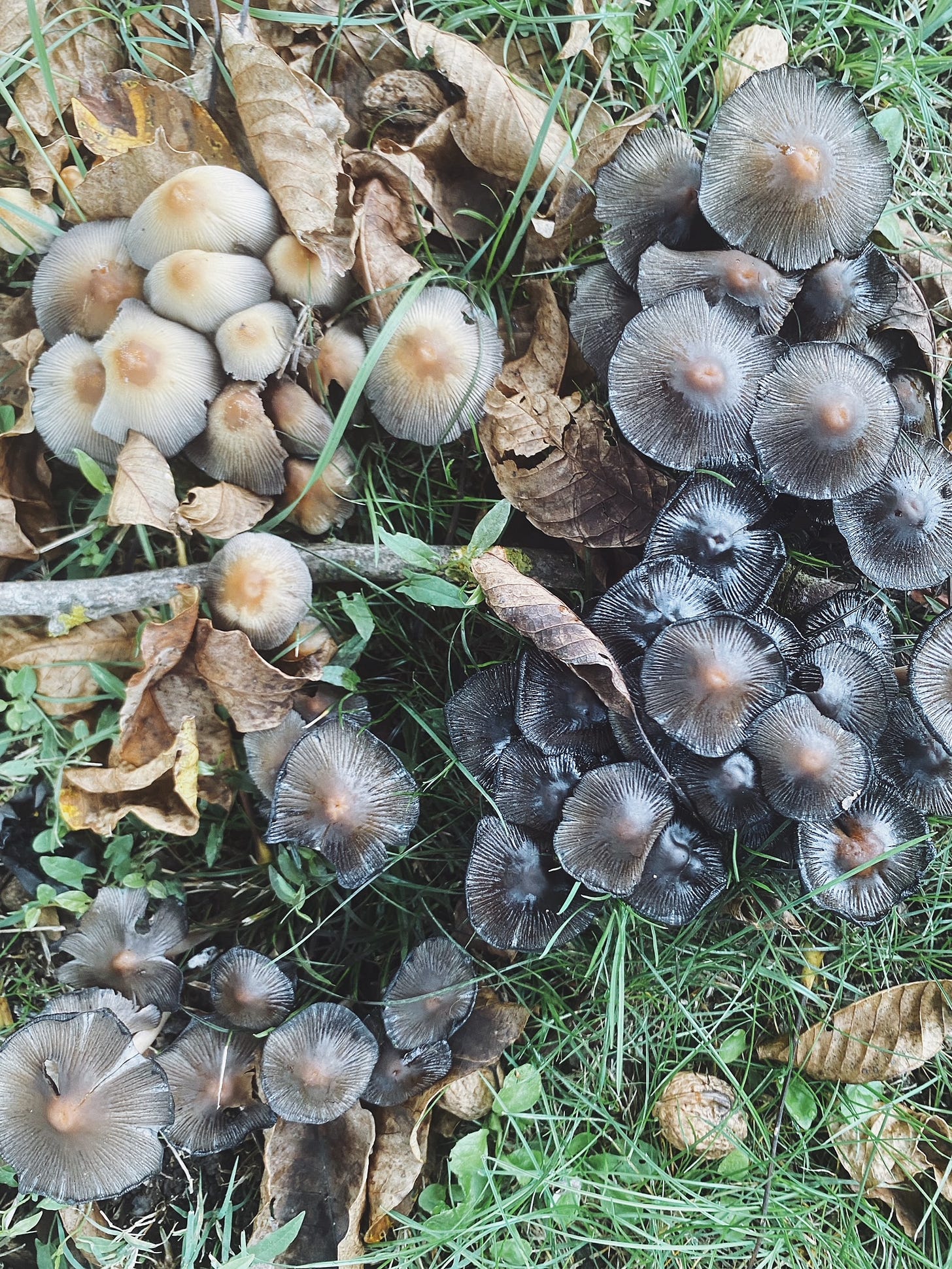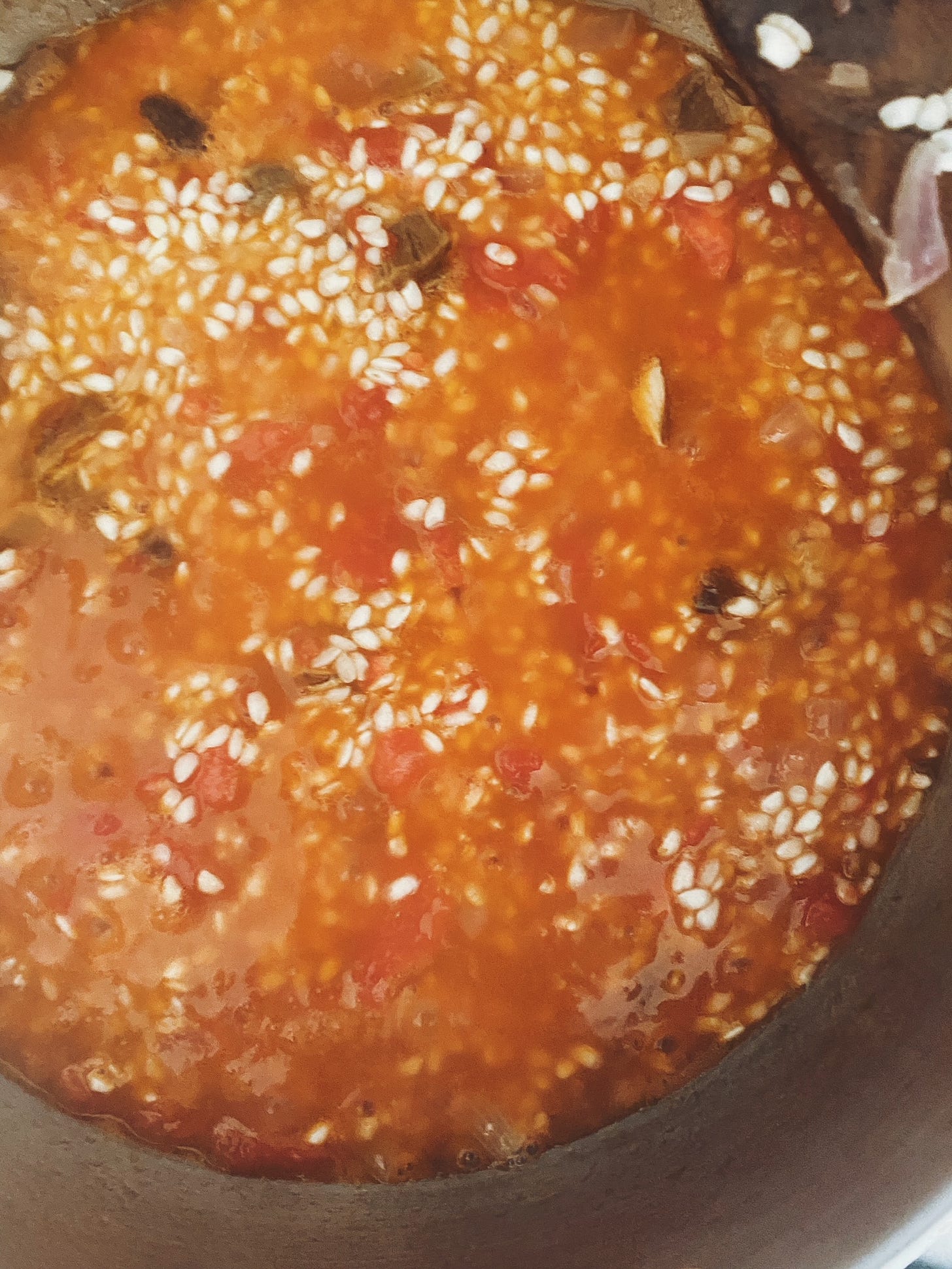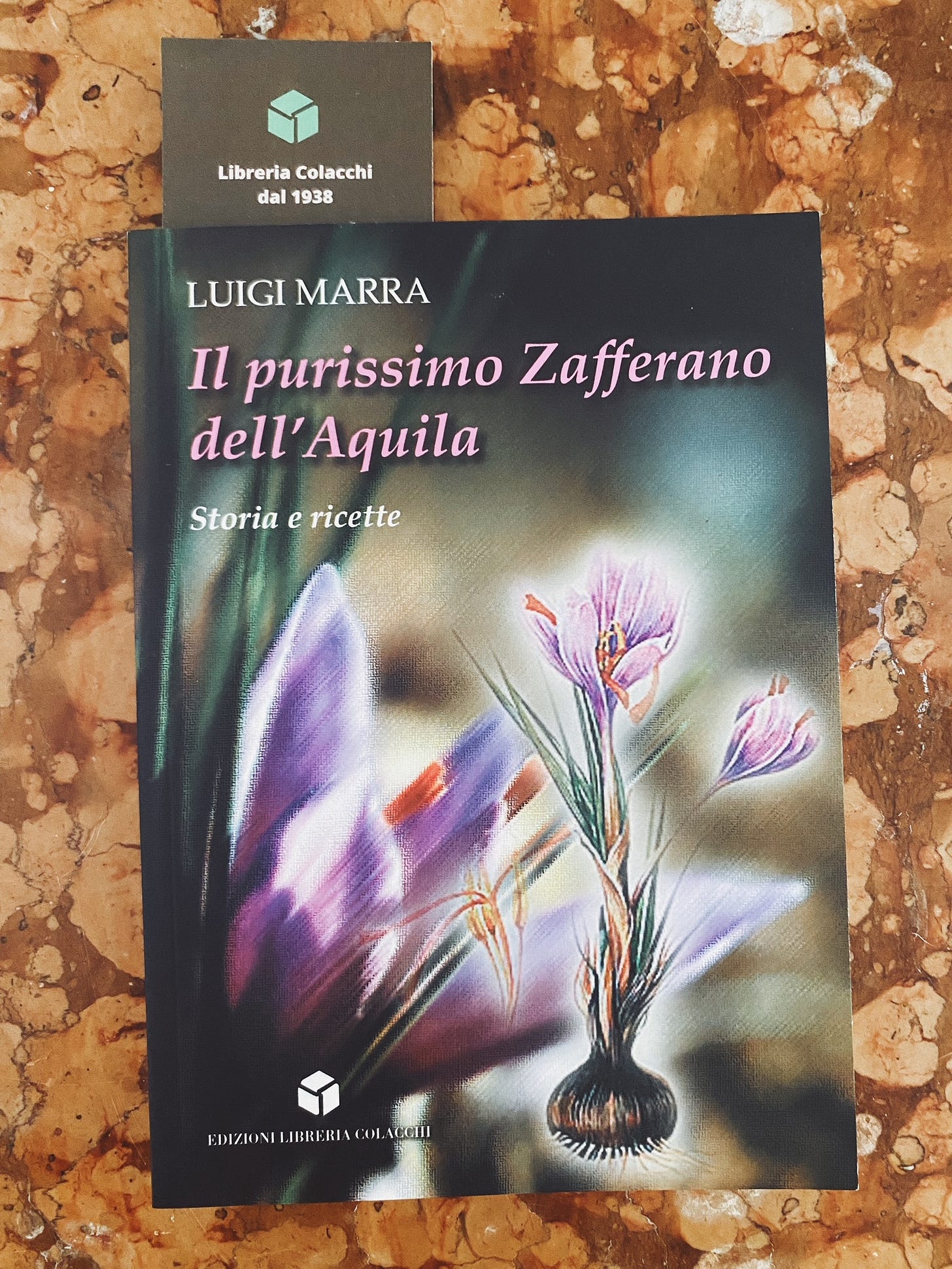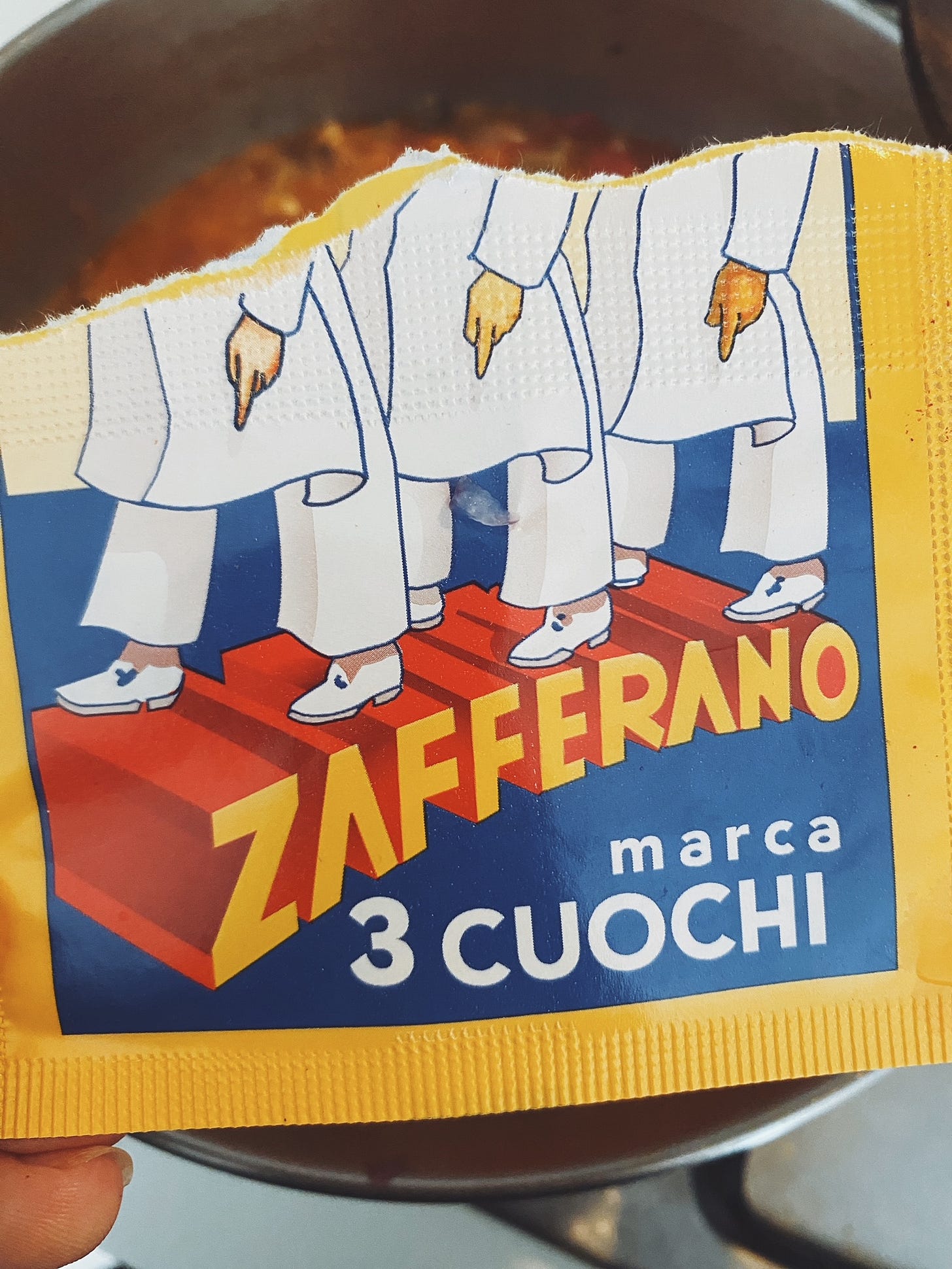Naturally Vegan Tomato, Saffron and Porcini Risotto
How to Prepare a Crowd-Pleasing Risotto + Community for Well-Being
Holistic nutrition teaches us about the concept of Primary and Secondary food. Primary foods are forms of nourishment such as Spirituality, Physical Activity, Career and Relationships which feed us on a deeper level. They are major contributors to well-being and longevity as reflected in studies conducted around the Mediterranean Diet and the Blue Zones. Quality food and water, also necessary for survival, are seen as Secondary forms of nourishment.
The idea is that Primary and Secondary foods work synergistically to help us achieve optimal wellness, and I have always found this very interesting. This model has gone more mainstream in the last 10 years due to the work of individuals like Gabor Maté, and thanks to them, people are finally finding true paths to natural healing.
I have experienced, in a very big way, the effects of Primary and Secondary foods coming in and out of balance in my life, and there is a good chance that you have too.
Relationships, spirituality, movement and having purpose were once everyday characteristics of rural, urban, and we might even say Indigenous life. As an extension of our interconnectedness with the earth, we physically came together in community to get through the day, to support and love one another in the name of our common survival maybe not even understanding how vital these natural acts were for our well-being.
One of the things that I love about the changing of the seasons is the rare meeting of produce across what seems like fleeting weeks. When what is coming in comes to hold the door, in a kind way of course, for what is on its way out. This time of year, we start to have mushrooms on our minds. Thanks to the recent rain which was absent in Central Italy this time last year, making for a poor mushroom season, we might hope for more bountiful months ahead.
I have drastically reduced my meat intake for my well-being with positive results, and I find mushrooms always make for a warming substitute. Mushrooms are a hero of autumn cuisine in Sabina and Central Italy, and they also work incredibly well in the many traditional dishes where meat is often required.
These recent rains also had me craving the comfort food that is risotto which I see, like pasta, gnocchi, polenta and crespelle as a blank canvas to paint the seasons on. Seasonal produce, the colours, and wooden spoons and sharp knives the brush.
With the desire to make the most of last week’s delivery of the last tomatoes, I thought to bring them together with some warming saffron and dried porcini. Too much? I guess not.
Last month Riccardo returned from a spin to L’Aquila to gift me ‘Il purissimo Zafferano dell’Aquila: Storia e ricette’ (The Pure Saffron of L’Aquila: History and Recipes), and here I hit gold when I found a recipe for Risotto all’antica from ‘Trattoria Casa Fontana’ di Milano which utilizes this same combination.
Is risotto traditional of our local cucina in Sabina? Well, not typically as rice is not part of our local Agri-food heritage as it would be up North, but it does feature now as part of our modern times. Is saffron? Technically no, but it is now being grown on Mount Terminillo, and it does feature in the cuisine of Abruzzo, our close neighbour into which our geopolitical region of Sabina once spread.
When mushrooms appear, we are reminded of the extensive network of their underground community and the intricate relationships on which we stand. Even if I was aware of our intrinsic need for community, it wasn’t until a few years ago when I learned about mycelium that my consciousnesses around its importance was taken to another level.
Almost contemporary to my discovery of this recipe was the Facebook post that popped up (I swear Meta reads our minds) to remind us of this inspiration:
Mycelium represents an extensive subterranean network composed of fungal threads that serves as an essential support framework for plant life…..
Envisioning a human society that mirrors the functional support system exemplified by mycelium conjures an image of profound empathy and collaboration. In such a societal structure, individuals would possess heightened awareness of each other's needs and struggles.
During times of adversity, the community’s response would be rapid and unified, ensuring that no individual faces hardship in isolation. Resources would be equitably allocated, nurturing a robust sense of community and mutual reliance….
In this idealized society, the principles of empathy and assistance would be inherently ingrained, fostering a resilient and nurturing environment…
This interconnectedness would promote a culture of solidarity, where caring for one another is intrinsic to the human experience, reminiscent of the natural processes that underpin a thriving forest.
Community is a superpower given to us by our world. Let’s be inspired by mycelium and mushrooms this autumn. Let’s thank them for their nourishment and all that they teach us. Let us prepare dishes full of them and invite our friends and family to the table to share in them — small acts of rebellion in the face of the separateness felt in our ever more disconnected world.
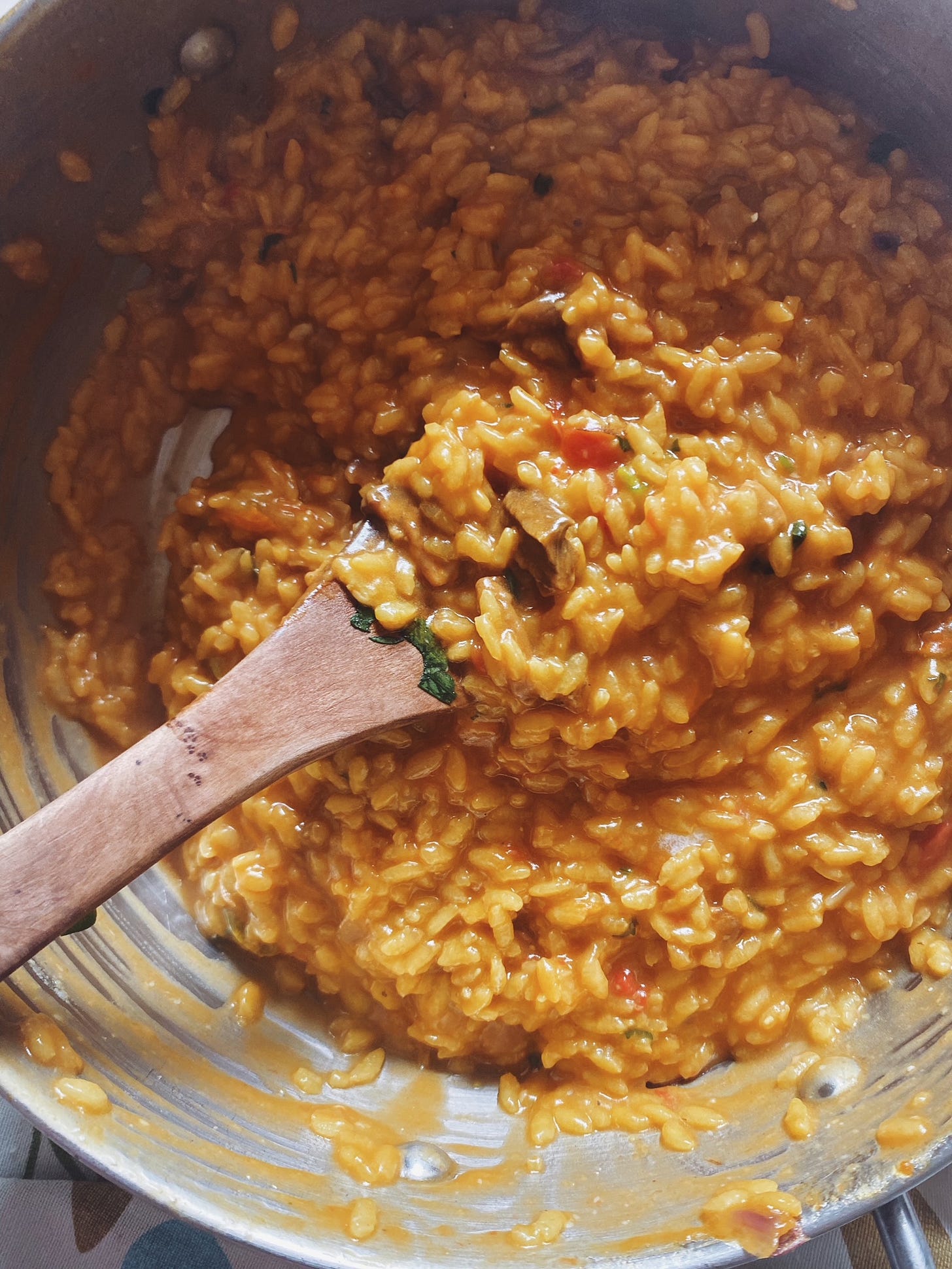
Risotto is a flexible crowd-pleasing comfort food that is great for entertaining as it can be easily adapted to a table full of people with various diet preferences or restrictions. Even for a table of four, I will plate a bowl of risotto in its dairy-free form for myself and my daughter then continue to ‘mantecare’ (cream) the rest of the pot with butter and cheese. For meat lovers like my husband and son, I sometimes prepare local crumbled sausage on the side (depending on the risotto) and sprinkle it over their plates before serving. Light risotti prepared with seafood, vegetables or fruit are often made exclusively with olive oil.
Tomato, Saffron and Porcini Risotto
Adapted from the Risotto all’antica of ‘Trattoria Casa Fontana’ di Milano
VE/GF
Serves 4
Ingredients:
300g risotto rice - Carnaroli or Vialone Nano
1 sachet of quality Italian saffron
200g fresh ripe tomatoes or canned S. Marzano, peeled + chopped
20g dried porcini, roughly chopped
1 small onion, finely chopped
80ml white wine
Extra virgin olive oil
1 quality vegetable broth cube or 1L of fresh vegetable broth
A small handful of fresh parsley, finely chopped
Sea salt
Optional:
50g of quality butter regular/lactose-free
30g of grated Parmigiano Reggiano, plus more to serve
3-4 courgette flowers rinsed, pistils removed
Method:
1. Add 1 litre of water and the broth cube or fresh broth to a medium saucepan, bring to a gentle boil and keep hot over low heat.
2. Ladle some broth into a small bowl and add your porcini, let stand for 5 minutes until soft.
3. Add a thin coat of olive oil to the bottom of a wide heavy-bottomed saucepan and warm over low heat. Add half of the butter here if using, and when it melts add your onion. Alternatively, add the onion directly to the warm oil.
4. When the onion is translucent, raise the heat, add your rice and stir to coat. Toast until it is also shiny and translucent, 2-3 minutes, taking care not to burn.
5. Add the white wine, and stir until it evaporates, then lower the heat. Add the tomatoes, parsley and porcini with their soaking liquid leaving the sediment behind.
6. Give the rice a good stir. Add the broth one ladle at a time when most of the liquid has been absorbed, and then add the saffron.
7. Continue to add the broth as it is absorbed stirring until the rice is al dente about 20-30 minutes. Gently tear in the courgette flowers if using and check the seasoning
8. For the mantecatura: 1. Add a drizzle of olive oil and gently stir with a wooden spoon. 2. Add about ½ cup of creamed vegetable or white beans to stir. 3. Add the other half of your butter and the cheese, then gently shake the pan covered to combine or gently stir.
9. Recheck seasoning, add another splash of hot broth to loosen if necessary and serve immediately.
Notes:
For fresh saffron, soak 1 teaspoon in a cup of water, strain to remove the pistils and add toward the end of the cooking time. Swap fresh porcini for dried when possible.





